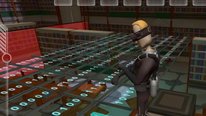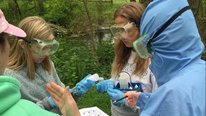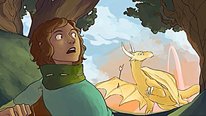- Shari Metcalf
- Project Director
- EcoXPT
- http://ecolearn.gse.harvard.edu
- Harvard University
- Chris Dede
- https://www.gse.harvard.edu/faculty/christopher-dede
- Timothy E. Wirth Professor in Learning Technologies
- EcoXPT
- http://ecolearn.gse.harvard.edu
- Harvard Graduate School of Education
- Tina Grotzer
- Associate Professor
- EcoXPT
- http://ecolearn.gse.harvard.edu
- Harvard Graduate School of Education
- Amy Kamarainen
- Senior Research Manager
- EcoXPT
- http://ecolearn.gse.harvard.edu
- Harvard University
Public Discussion
Continue the discussion of this presentation on the Multiplex. Go to Multiplex










Arthur Camins
Director
Amy,
This looks like a powerful set of tools that students can use to understand population dynamics as well as system and subsystem interaction. What are you learning about the teaching and learning challenges of a virtual environment?
Thanks,
Arthur
Amy Kamarainen
Thanks for your question, Arthur. One challenge that arises is how to best support teachers in guiding their students’ inquiry. As much of the action is happening through individual student in the virtual world, teachers have expressed concern about knowing where students are in the inquiry process, and knowing the kinds of support they may need next. We are paying a lot of attention to this as we test the curriculum and software in classrooms and have been collecting observations about the approaches that work and don’t work so that we can integrate suggestions and pictures of practice in our final professional development and teacher support materials. We also have ideas about how we might use log files to generate views of the student process for teachers to use in their instruction, so stay tuned!
Elissa Milto
Director of Outreach
Hello,
This looks like it is very engaging to the students and pretty well developed for a pilot version. Can you talk a bit about your pilot work and how much support you gave students and teachers as they worked on EcoMUVE?
Thanks,
Elissa
Shari Metcalf
Project Director
Thank you. In a sense, our prior grant with EcoMUVE served as a pilot, in supporting students learning ecosystem science with an inquiry-based curriculum using virtual environments. A few of our teachers have used EcoMUVE for five or six years. With new teachers, we provide an in-depth teacher’s guide, meet with teachers for a few hours of training, and visit several times during the two-week curriculum to check in with teachers as well as to observe and collect data.
While the two-week curriculum is primarily student-centered and inquiry-based, teachers are asked to provide support and guidance around our understanding goals, including experimentation and investigation in ecosystems science, how to think about graphs over time and other data that they have collected, and different approaches to obtaining and evaluating evidence in ecosystems.
Sarah-Kay McDonald
Principal Research Scientist
I’d also be interested in learning more about any teacher professional development activities and/or ongoing instructional support that might be available to instructors who select to employ EcoXPT in their classroom environments. A related question is whether there are any opportunities for students to collaborate—in real time or asynchronously—using EcoXPT outside of the formal classroom environment. Thanks – looking forward to learning more!
Shari Metcalf
Project Director
For EcoXPT, we are developing new curriculum materials and supports for teachers, some of which we are piloting in the next few weeks. And over the next year we will continue to develop and refine our teacher professional development.
For research purposes, we ask that students do not use EcoXPT outside of the classroom, though during class they collaborate extensively, as shown by some of the clips in the video.
Jenna Mercury
This looks really interesting! This project encompasses some very important components of science learning. How can classrooms get involved in the beta testing?
Shari Metcalf
Project Director
Thanks for your interest! The short answer is that EcoXPT isn’t ready yet to add beta test classrooms, but you can e-mail us at <ecomuve@gse.harvard.edu> to let us know you’re interested.
Meanwhile, though, EcoMUVE is available as a free download through license from Harvard University. Visit our website, ecolearn.gse.harvard.edu, register, go to EcoMUVE and click resources to get the most recent version of the software, as well as the teachers’ guide and other materials. It runs on Mac and PC computers.
Arthur Camins
Director
Your program clearly gives students an opportunity to explore, manipulate and make sense of environmental factors in a virtual environment in ways that would be impractical in the “real” world. Are there any issues that arise or concerns about how they use what they learn to interpret phenomenon in their environment.
Jenna Mercury
Arthur, thank you for your comment! Science4Us does use a virtual environment, however once the students engage and explore the topic, we explain the content with actual images and push aside the more cartoon nature of learning. Also, our offline activities range from working hands-on with true objects in the classroom to outdoor investigations.
Shari Metcalf
Project Director
Arthur, thank you for your question about EcoXPT. In our experience, when we bring students out into the real world after they have used the our virtual ecosystem, the students make more thoughtful observations and predictions, grounded by the background understanding about ecosystems that they have developed – including the non-obvious features that they can’t see in real life.
We also try to make sure to discuss with students the ways that EcoMUVE/EcoXPT is a model of a real ecosystem, and in what ways it is both similar and different to the real world. In a related research project, EcoMOBILE, we bring students on field trips to real ponds where they experience some of the complexities and variability of data collecting in the real world.
Elliot Soloway
Push the envelope of technology… AND make that push educationally interesting. EcoXPT is an excellent example of putting the two key elements together!
Shari Metcalf
Project Director
Thanks, Elliot! It’s exciting to bring these immersive virtual worlds to classrooms, and to facilitate students getting to engage in inquiry-based ecosystem investigations – well beyond what would be possible without the technology.
Roger Taylor
Hi Shari, it’s great to see your group continuing to develop EcoMUVE. The epistemological component is a nice addition. I’ve done some work with science education and the Nature of Science so I recognize the challenges involved. Could you talk a little bit more about this part of the project?
Relatedly, I’m currently analyzing students’ learning and emotional states when they build dynamic causal concept maps as models for ecosystems in the Teachable Agents system. I was was wondering if you’ve had a chance yet to do similar analyses yet with EcoXPT.
Further posting is closed as the showcase has ended.